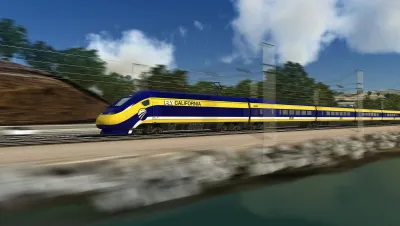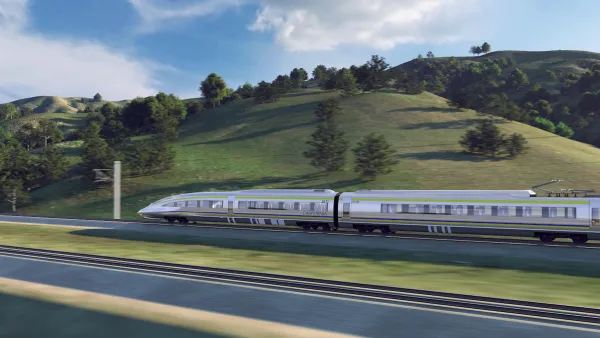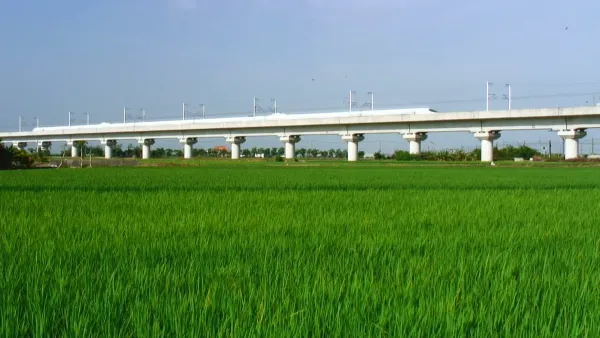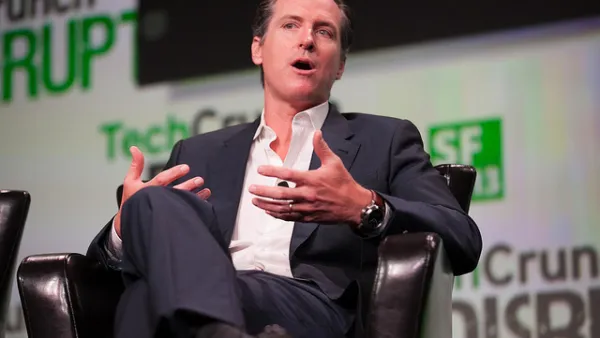Journalist Kathleen Sharp, whose great-grandfather worked on the transcontinental railroad, draws comparisons between that epic achievement and the construction of California's high speed rail in this New York Times op-ed.

Depending on one's perspective, California's mega-project is either a symbol of the best of what government can do for its citizens, or a boondoggle of unprecedented scale. Since opponents have made it clear where they stand, particularly in the courts, Sharp offers a fresh and historical perspective from the pro side of the argument.
"In 1869, after years of delays and cost overruns, the transcontinental railroad was finally completed," writes Sharp. "It was the last missing link connecting the American West to the Eastern Seaboard, and a cross-country trip that had once taken six months was cut to around a week...and is considered to be one of the greatest technological feats of the 19th century."
Now, almost 150 years later, the high-speed bullet train aims to hit a similar goal. Last month, officials broke ground on the system that will eventually link San Diego to San Francisco, and tie the California coast on the west (where most travelers live) to the Central Valley in the east (where the tracks lie).
Sharp then acknowledges the projects critics and challenges, from residents who view it a boondoggle to Congress, which has passed legislation, sponsored by a Californian (from the Central Valley, no less, which stands the most to gain from construction jobs) to deny the mega-project any additional federal funds.
But bigger than the train’s cost and potential payoff is what it symbolizes. Nowhere else in the country can you find such bold, stubborn faith in the idea that government can actually do something for its citizens. It’s as if, after the long recession and a punishing drought, hope is stirring again in the Golden State.
Sharp ends by writing "what the transcontinental railroad was to its century, the bullet train can be to ours." Well, for Californians, at least.
FULL STORY: 150 Years of Working on the Railroad

Analysis: Cybertruck Fatality Rate Far Exceeds That of Ford Pinto
The Tesla Cybertruck was recalled seven times last year.

National Parks Layoffs Will Cause Communities to Lose Billions
Thousands of essential park workers were laid off this week, just before the busy spring break season.

Retro-silient?: America’s First “Eco-burb,” The Woodlands Turns 50
A master-planned community north of Houston offers lessons on green infrastructure and resilient design, but falls short of its founder’s lofty affordability and walkability goals.

Test News Post 1
This is a summary

Analysis: Cybertruck Fatality Rate Far Exceeds That of Ford Pinto
The Tesla Cybertruck was recalled seven times last year.

Test News Headline 46
Test for the image on the front page.
Urban Design for Planners 1: Software Tools
This six-course series explores essential urban design concepts using open source software and equips planners with the tools they need to participate fully in the urban design process.
Planning for Universal Design
Learn the tools for implementing Universal Design in planning regulations.
EMC Planning Group, Inc.
Planetizen
Planetizen
Mpact (formerly Rail~Volution)
Great Falls Development Authority, Inc.
HUDs Office of Policy Development and Research
NYU Wagner Graduate School of Public Service




























